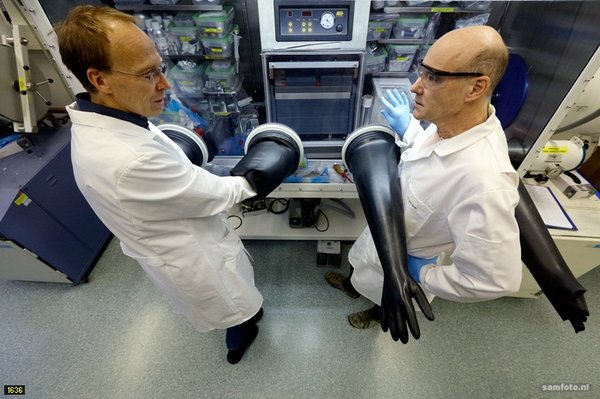Battery Lab improves batteries
Increasing use of electric cars, e-bikes and green power means the demand for better batteries is growing. Some 20 people are working on the batteries of tomorrow in the TU Delft Battery Lab.
The new Battery Lab opened its doors in TU Delft’s Reactor Institute last spring. Applied Sciences researchers Dr Erik Kelder and Dr Marnix Wagemaker and their teams are working on the next generations of batteries: from cheap static storage of renewable energy to compact and lightweight batteries for electric vehicles and electronics.
The laboratories are equipped to facilitate all phases of battery making and testing. In addition to Li-ion batteries, the Battery Lab is also testing Na-ion batteries (for cheap mass storage) and solid Li-ion batteries (leak-free and safe).
Fume cupboards are used to build batteries in oxygen and moisture-free conditions using electro-spray techniques. The testing room has sufficient capacity to test 150 batteries simultaneously. Frans Ooms is pleased to have all the facilities under one roof now, because he says it facilitates standardisation and hence also the quality of the research.

Dr Erik Kelder and Dr Marnix Wagemaker are working on the next generations of batteries.
Foto: © Sam Rentmeester
The researchers closely follow the paths of ions through the electrodes and the electrolytic medium using neutron diffraction, NMR (nuclear magnetic resonance) electron microscopy and many other techniques. They can also follow the ageing process of electrodes.
The Battery Lab also conducts computer simulations to test battery components at the atomic scale. Other techniques are applied to scale the results up to the electrode level.
Wagemaker is happy with the new lab: “The lab has been enlarged and offers even more possibilities for research. All of the lab facilities are now located together in one central place. It can also be combined with the RID’s unique infrastructure, including neutron depth profiling, neutron diffraction and solid state NMR. This will enable us to better understand the complex battery processes, so that we can develop better batteries.”